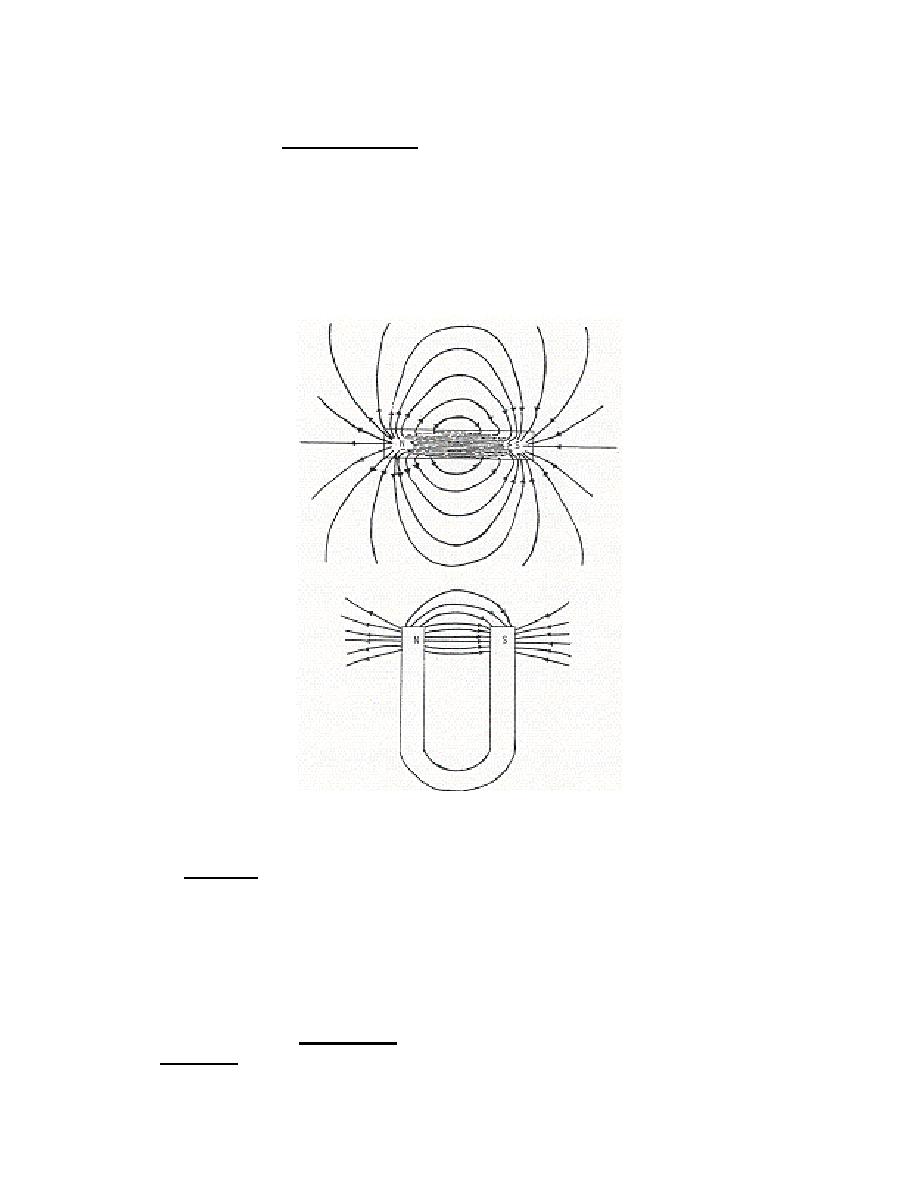
c. Theory of Magnetism. Magnetic materials consist of millions of tiny
elementary magnets (magnetic dipoles) that are so small they cannot be seen by an
optical microscope. They are probably molecular or atomic in size. The molecular
magnets that make up a nonmagnetized bar of iron or steel are arranged at random;
the magnetism of each molecule is neutralized by that of adjacent molecules and
there is no external magnetic effect. When a magnetizing force is applied to this
nonmagnetized iron bar, the molecules become aligned so that their north poles point
in one direction and the south poles in the opposite direction (figure 2-6A). With the
magnetic molecules aligned, their magnetic strengths combine and the bar is then said
to be magnetized.
Figure 2-6. Magnetic fields -- bar magnet (top) and horseshoe magnet (bottom).
(The magnetic lines of force are represented by lines about the magnets. These lines of
force are assumed to act from the north pole to the south pole of the magnet as
indicated by the arrows.)
2-12. PROPERTIES OF MAGNETIC MATERIALS
The magnetic qualities of materials vary greatly. For instance, the magnetic
molecules of some materials are more easily aligned under the influence of a magnetic
field than the molecules of other materials. The ease with which a material can be
magnetized is called its permeability. The ability of a material to retain its magnetism is
called retentivity. Any metal that is easily magnetized loses its magnetism easily. Soft
MD0950
2-12



 Previous Page
Previous Page
